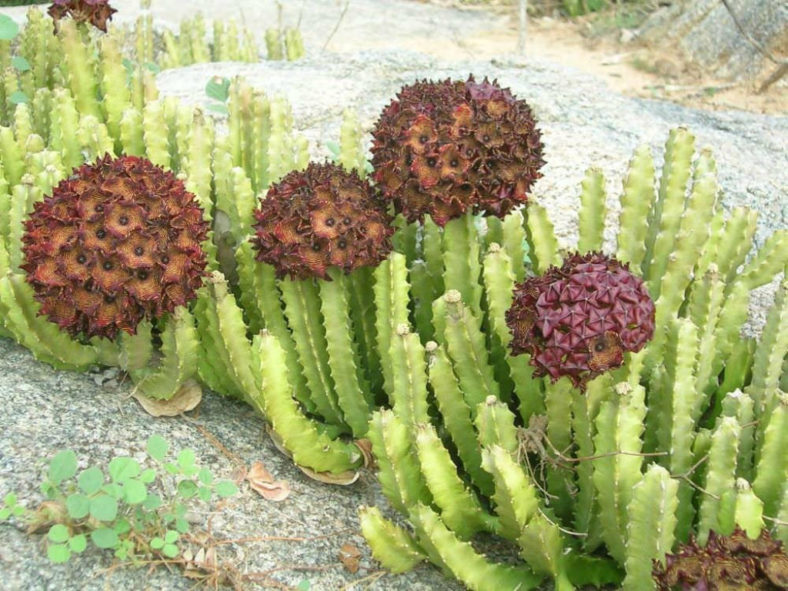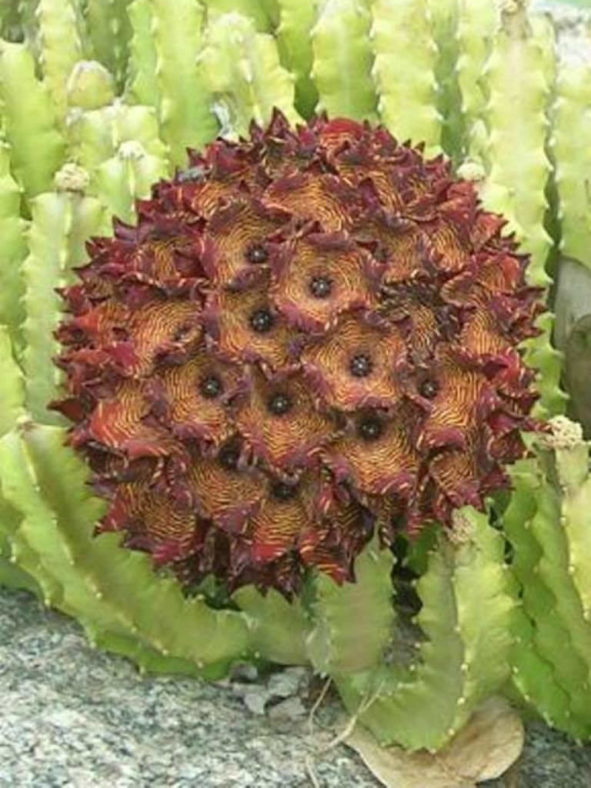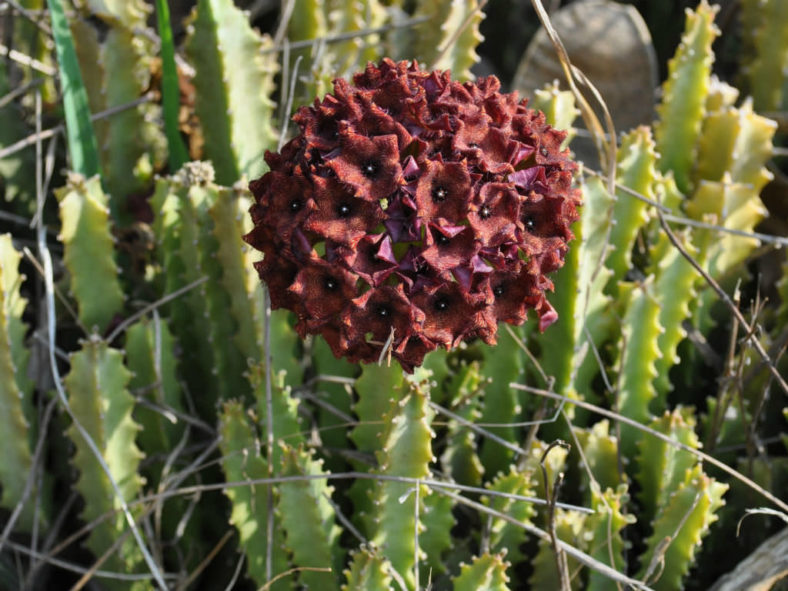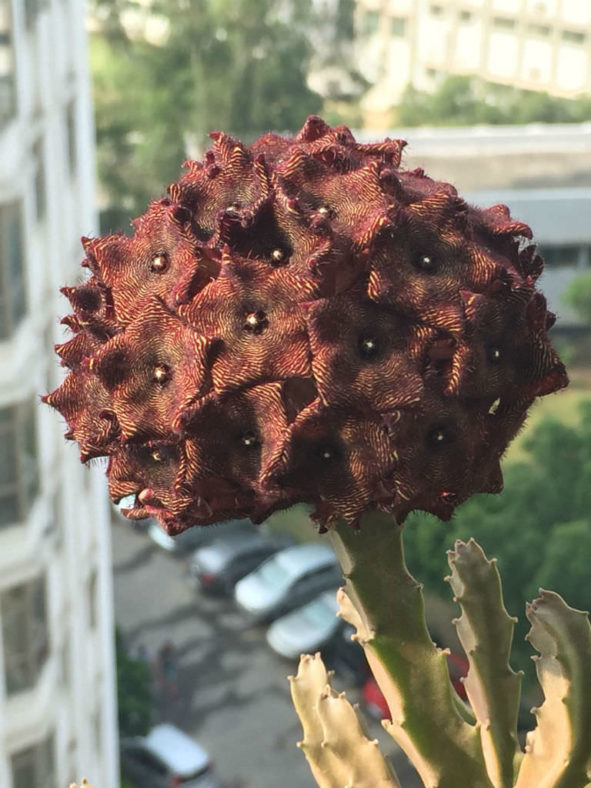Scientific Name
Caralluma umbellata Haw.
Common Name(s)
Umbelled Caralluma
Synonym(s)
Boucerosia umbellata, Ceropegia umbellata, Desmidorchis umbellata, Stapelia umbellata
Scientific Classification
Family: Apocynaceae
Subfamily: Asclepiadoideae
Tribe: Ceropegieae
Subtribe: Stapeliinae
Genus: Caralluma
Origin
Caralluma umbellata is native to India (Karnataka, Kerala, and Tamil Nadu).
Description
Caralluma umbellata is an attractive succulent with erect, branched stems and flowers arranged in terminal umbels. It can grow up to 12 inches (30 cm) tall. The stems and branches are green and 4-angled. The leaves are borne along the angles, falling off and leaving scars. They are asymmetric, long-pointed, and have a narrowed base.
The flowers are purple with cross stripes. The fruits are cylindrical seedpods, green with small dark spots, hooked at the apex, and paired. The seeds are flattened, broadly margined, with silky white hairs.

Hardiness
USDA hardiness zone 10a to 11b: from 30°F (−1.1°C) to 50°F (+10°C).
How to Grow and Care
Stapeliads are relatively easy to grow. However, they should be treated as outdoor plants as they will easily rot indoors and cannot flower without exposure to outdoor temperature fluctuations. They should be grown under cover so that watering can be controlled. They require a reasonable amount of sunlight to promote flowering and maintain a well-shaped plant. Very shady positions will produce very poor flowering. Stapeliads come from climates that survive extremely high temperatures in the summer months, so most growth is in spring and fall, with flowering in fall when the weather cools down.
The easiest and best way to propagate Stapeliads is by stem cuttings, which can be taken virtually throughout the year. Seed is also a method of propagation. They all need extra good drainage. Stapeliads are shallow-rooted, and a collection of them can be planted up nicely in a wide, shallow bowl. When planting, it is a good idea to allow the roots to be buried in soil and then put pure gravel or sand around the base of the plant to prevent rot.
See more at How to Grow and Care for Stapeliads.
Links
- Back to genus Caralluma
- Succupedia: Browse succulents by Scientific Name, Common Name, Genus, Family, USDA Hardiness Zone, Origin, or cacti by Genus
Photo Gallery
Click on a photo to see a larger version.


